A belated self-guilty attempt to start journalling of my life whilst trying to avoid genre specific egotism and making it a practical guide for the readers.
JAPAN.
Ofuna is a suburb of Kamakura City, a place full of history, temples and tourists. Unlike Kamakura, Ofuna is more laid-back, low key and definitely low income with budget groceries and veggie shops, full of affordable drinking and eating spots. I went there for a medical checkup and afterwards decided to visit Ofuna Kanon-ji, a temple devoted to Guanyin Bodhisatwa (goddess of mercy and compassion) standing 25 m tall. The statue is very impressive from the close distance where you can see the fine details of the craftsmanship.
Interestingly, you can also enter inside where you can find a thousand of so wood-carved Buddhas created as eternal prayer for those died in wars.
KOREA.
In March I spent a week in Seoul. Korea, as usual, feels more energetic and modern compared to Japan. Less people sleeping on the trains, most of them gazing at smart phones, never had to use cash anywhere - all digital.
Regarding South Korean neighbor in the north, after observing how people at the back of the train rigorously push themselves towards the exit door with a grim and determined expression on their faces, especially the elderly, I have no doubt in the fighting spirit of the nation.
By the way, last year STO (Seoul Tourism Organization) launched a new Seoul guide. I highly recommend picking it up at the airport. Activities sorted by type, area spots highlighted, day trip plans offered. A real gem, even for me after around 50 visits to Seoul with total time spent close to a year.
On a wandering side, if you are after a suburb which is not yet pronounced “cool”, try Yeonhui, not far from Hongik University subway station. I might do a short photo story later.
I continued exploring the stream walks near Cheonggyesan area of Seoul on my free day. So, if you want to still be in the city but see less people, try walking from hotel Orakai near Cheonggyesan station to Citizen’s Forest, then left to Gwacheon station. A nice stroll for around 3-4 hours.
HONKONG.
After Korea I spent a week in HK. Quarrel-like dialogues of locals due to nine tones or so of the guttural Cantonese language, frown as a common face expression, ability of people here to open doors with their backs as a bogus precaution against (probably?) COVID (thank you again Japanese government for no lockdowns) - I normally need a few days to get used, but all so far familiar. Being already gruff in manners compared to exceedingly polite Japan HK is changing in multiple domains. I remember 20 years ago anything “made in China” was frowned upon. These days locals, especially the younger ones, spend their weekends shopping and eating in Shenzhen. Or just using online platform Tao Bao sugaring the deals with free deliveries to HK. Result? Many restaurants and shops in HK are closing.
Mandarin language is represented stronger now. Since 2008, about 20% of more than 1,000 schools have joined the government to promote the use of Mandarin in HK education. However, the English is still the second teaching language (Cantonese - the first). “We are no longer international finance center”, tells me one runner on the promenade. “It is just another big Chinese city “.
The MRT is very efficient, trains arrive at 2-3 minutes intervals and often to change lines you just need to walk to the opposite platform. The squealing sounds of commercials inside the trains are mixed with passengers communicating with the equal rigor on their phones and most stations have no toilets. The city feels crowded, elbows and shoulders are moving close to each other, the smoking on the go is common, ditto for walking or biking with music and other noises on through the loudspeakers, and - HK style milk tea never fails.
This trip I stayed at Tsuen Kwan O (TKO) area.
There is a short post here about TKO. It is ok for a new experience, but I like more rustic and less manicured suburbs in HK. For example, similar to Tai Wo Hau.
If you are craving for some space and sea view, but still need to be in HK, I recommend Gold Coast area facing Castle Peak Bay of South China Sea which is opposite Lantau. The airport is close, my flight to Japan is tomorrow, so I am a taking a short break here.

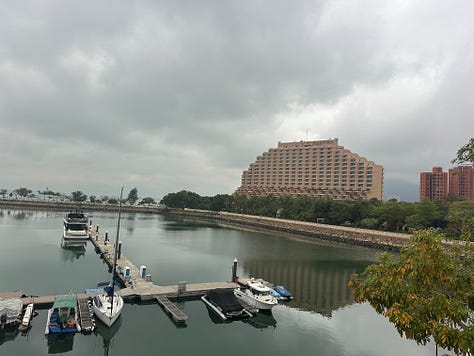
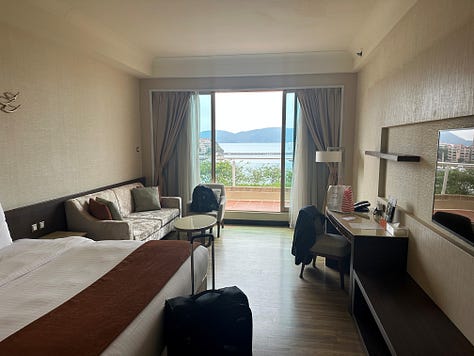
From Hotel you can walk along the sea towards Tuen Mun town or a bit further up to Butterfly Beach, takes over an hour.
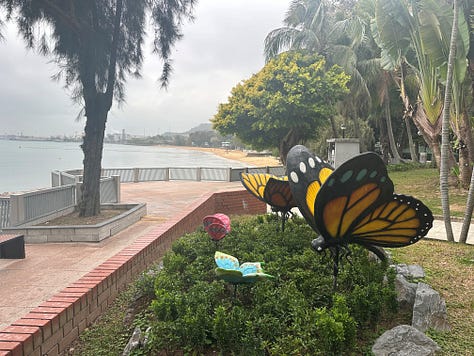

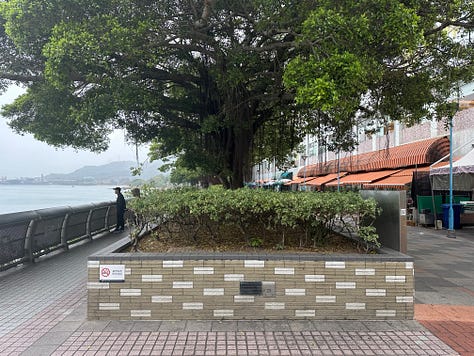
GOOD READS
Started to read The Gulag Archipelago by A. Solzhenitsyn. What a giant. I remember him coming to Vladivostok in 1994. At that time I was helping the photo correspondent of Yomiuri Shimbun, Mr. Sonoda, to move around Russia’s Far East in his search of a perfect shot. Remembering the cheering crowds, the sense of a newly acquired freedom in the air, and then 20 years later or so to find Russia crawling back where it was.
Liked this piece by Jack. Probably because I used to have similar routine in the new cities, including San-Francisco, running around and getting to know the place. My First Evening in San-Francisco.
Not that we don’t know it, but some motivational reading to reenforce good habits. “Decluttering My Life”.
Similar. I like this large slicing of life into doing two things, default and elective. And that the best things in life do not happen themselves. The concept can be expanded further, as some elective things gradually become the default ones, which is excellent.
GOOD WATCH
Comical life show spiced with a sense of a tragedy featuring US and delivered via the multiple news channels.
GOOD BITES.
Australian flavors in Japan. Aussie influence is steadily stepping inside the menus of the cafes in Japan. My favorite avocado toast is now served at the chain of slightly overpriced Dean and Deluca stores in Japan. Interestingly the chain started in New York in 1977 by Joel Dean and Giorgio DeLuca. While I am considering imposing my own tariffs on anything made in US, I believe the chain is locally owned.
Similar menu I spotted in Latte Graphic Cafe at Ebina. Welcome, welcome. Of course, I can make similar toast easily at home topping it with some crushed fetta and alfalfa, but I am yet to master a poached egg.
And unusual for Japan, this place opens at 7 am!
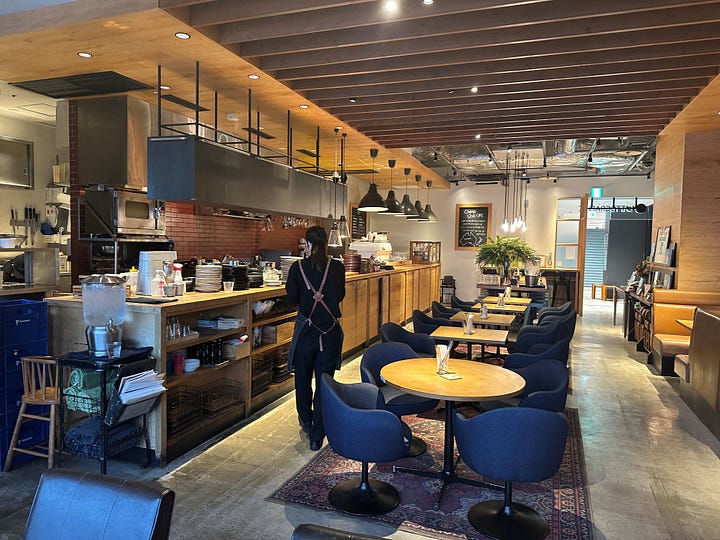
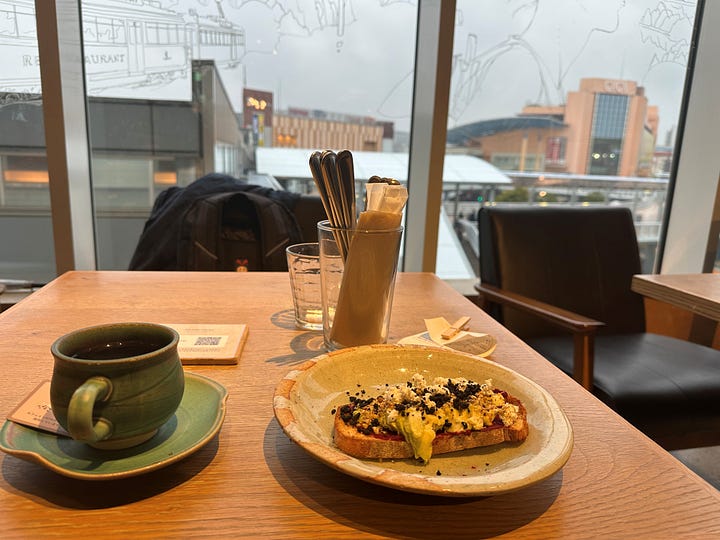
Smashed avocado toast again, now in Seoul. If you are close to Cheonggyesan station (10 minutes from Gangnam on Sinbundang line), I recommend visiting newly opened Toorak Laneway Cafe, opened by Australian Koreans born in Melbourne and now living in Seoul.

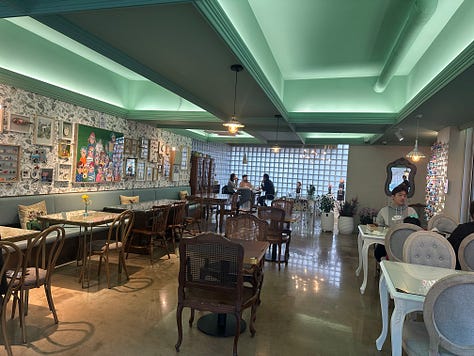
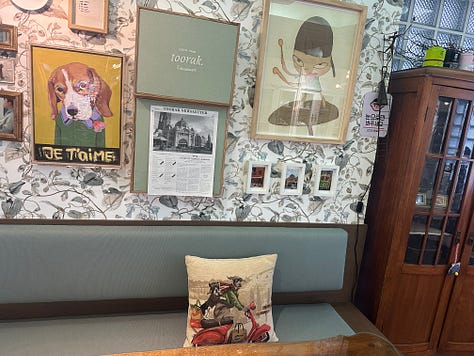
Toorak Lane cafe, inside and outside. It was probably the best smashed avocado on toast I ever tried. Running poached eggs, radish mixed with herbs, crusty sourdough - every bite was a pleasure.
The place is still not on the maps, you can find it near Second Clock Cafe, a short walk from Cheonggyesan station.
Another good Seoul cafe is in Sinsa. Flour Artisan Bakery Cafe has a huge variety of pastries plus they make nice sourdough. Coffee is excellent which is nearly a norm in non-chain cafes in Korea.
Occasionally if I have a chance, I like good yum cha. In Tseung Kwan O, Hong Kong, one such place is Praise House, a chain belonging to Fook Choi Group.
One of my favorites there is steamed prawn with rice in a lotus leaf. The entrance is near exit B2, TKO MRT station, near entrance to the mall (yes, you don’t need to walk through the mall if you don’t want to).
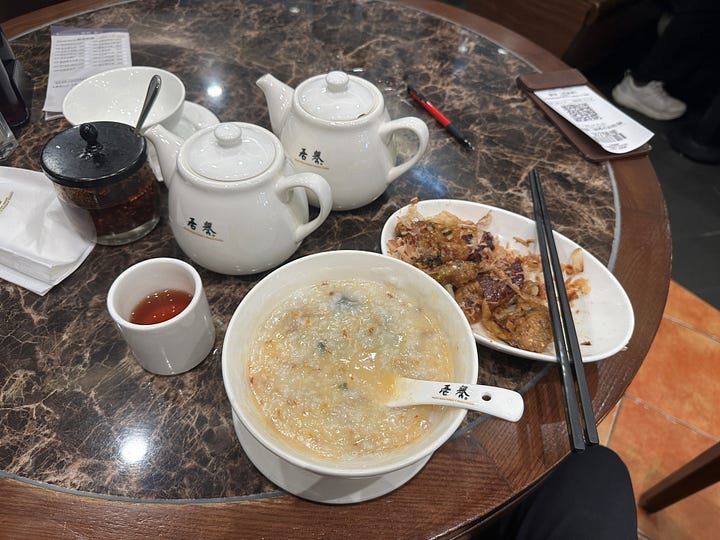
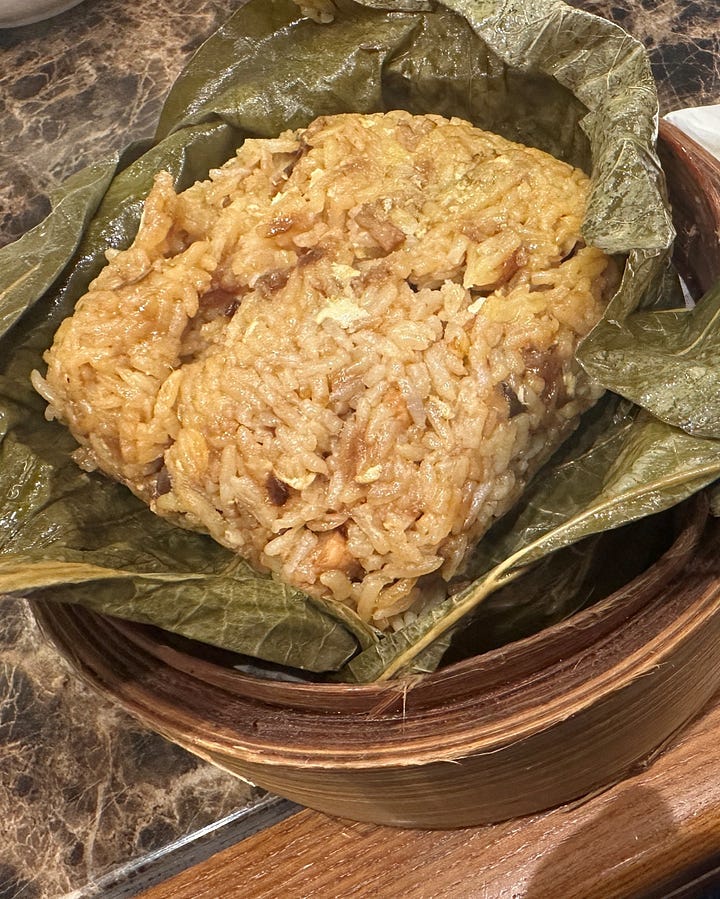
Shredded pork congee with eggplant and bonito, and prawn rice in lotus leaf.
EXERCISE AND HEALTH
As my coronary calcium score is high (some doctors say genetic, some say “stress” - for these diagnoses I don’t need to study medicine for years), recently I have been scrutinizing food labels very closely. Aiming at (per 100 g): fat - less than 3 g, saturated fat - less than 1.5 g, sugar - less than 5g. But to my vigilant eye recently I added a parameter of “made where”. Normally I try to buy made in Japan.
The other day I was buying tofu, and the label says, “beans sourced in US or Canada”. Somehow recently I prefer “made in Canada”, will watch more closely now.
I have been incorporating crawling into outdoor exercises when I have a chance. Definitely you would feel pain in the muscles you did not know exist.
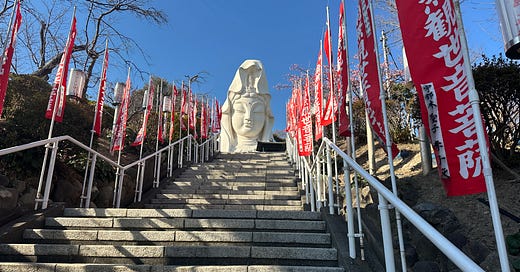



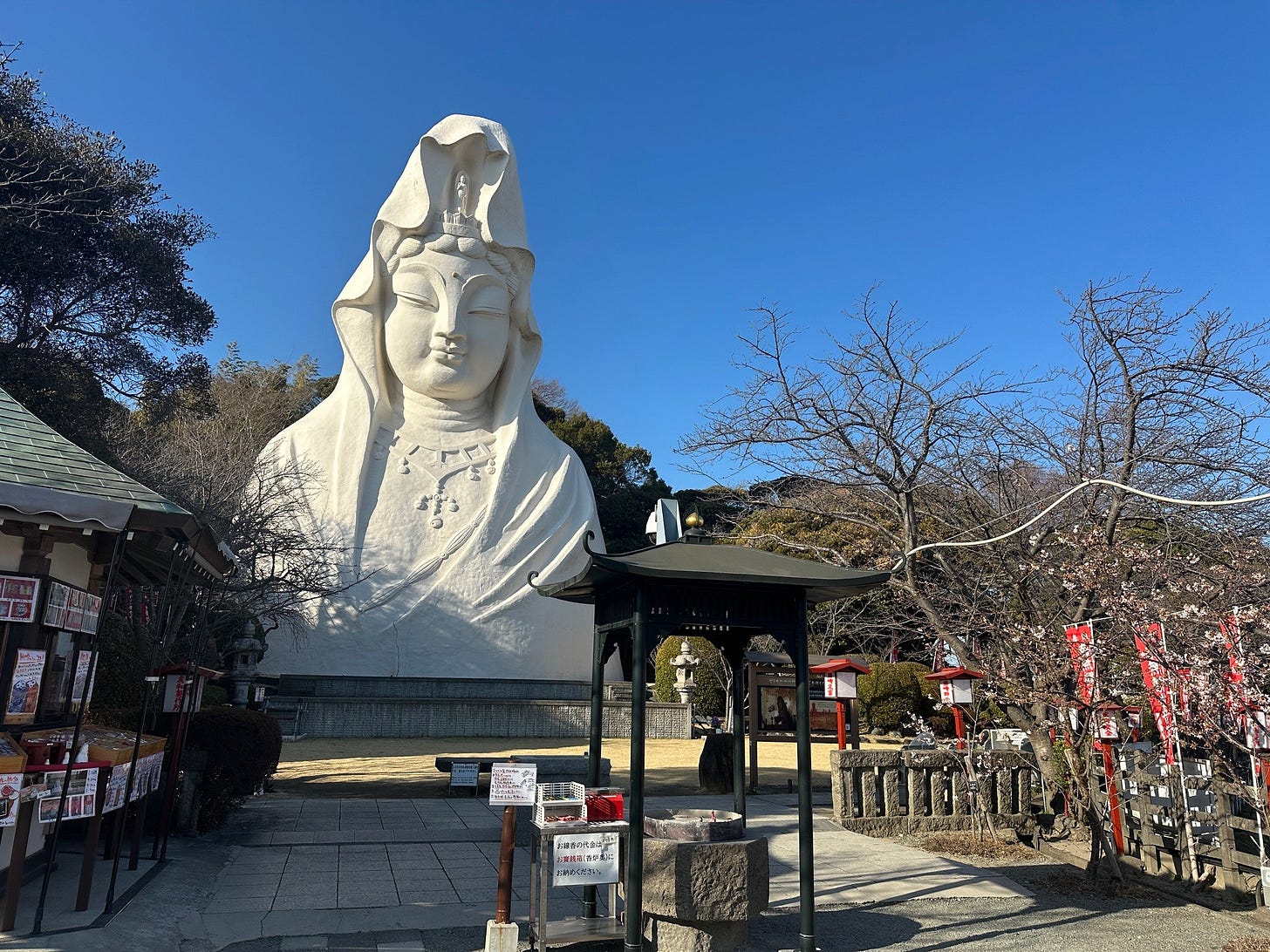
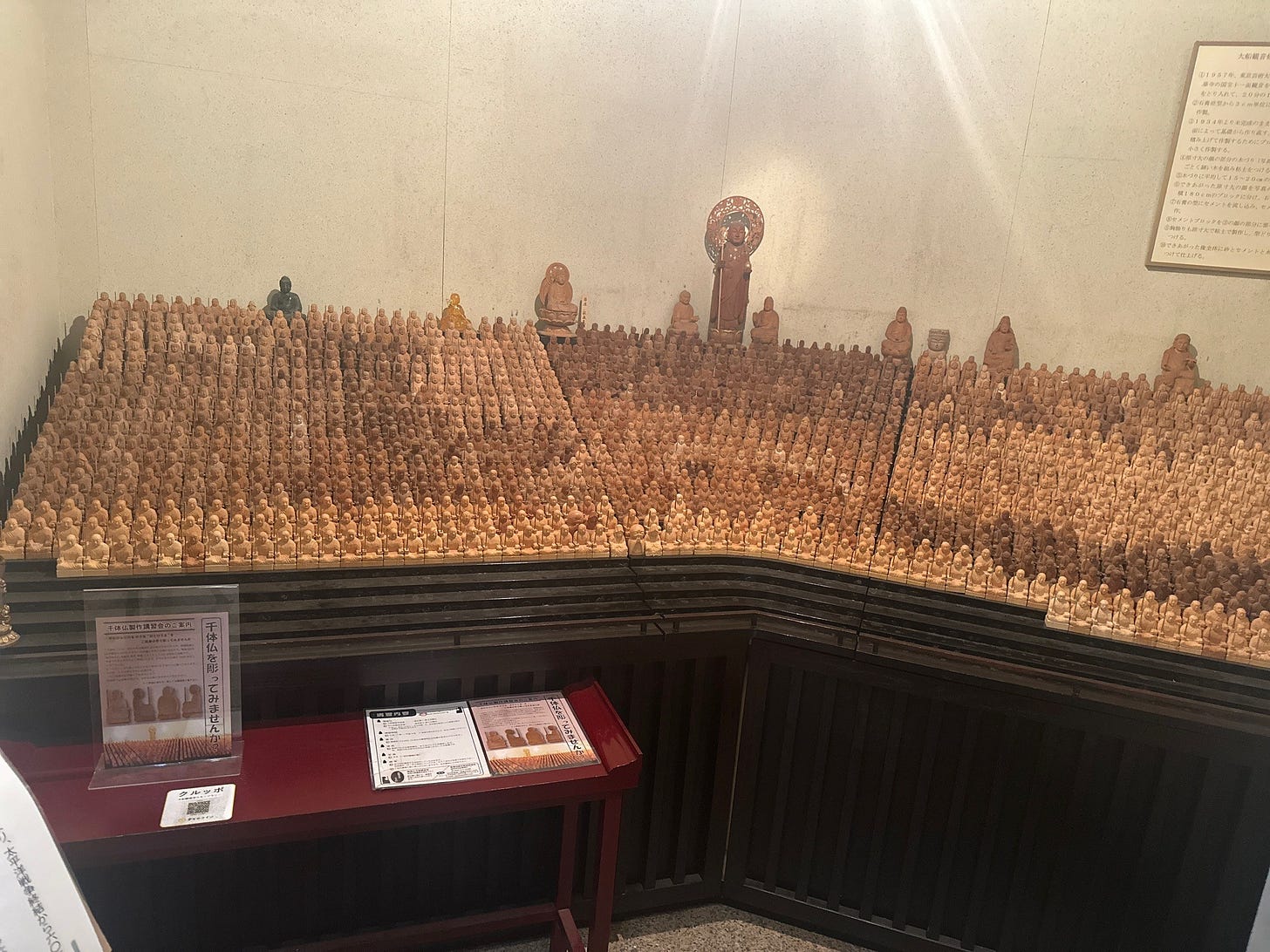
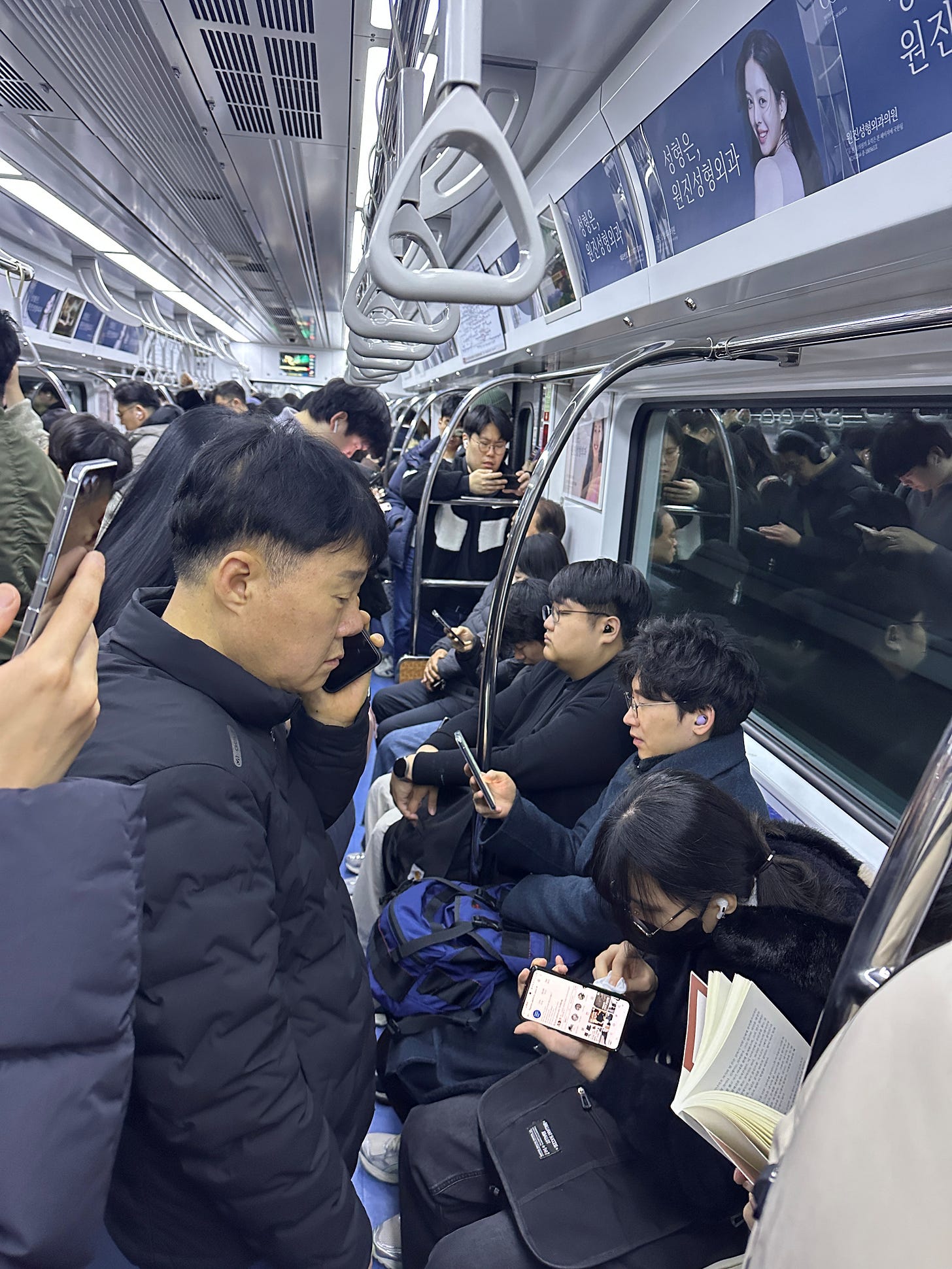
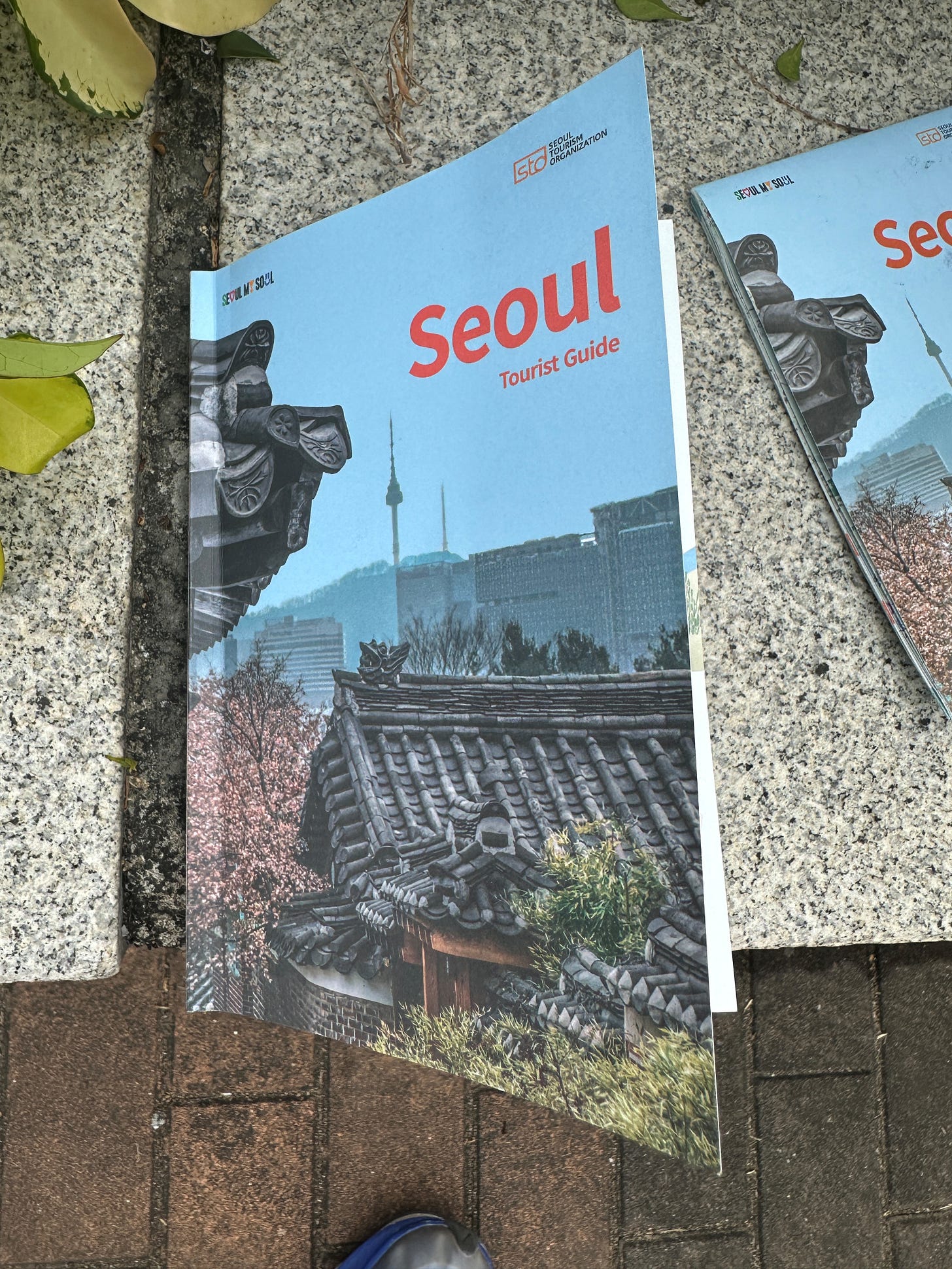
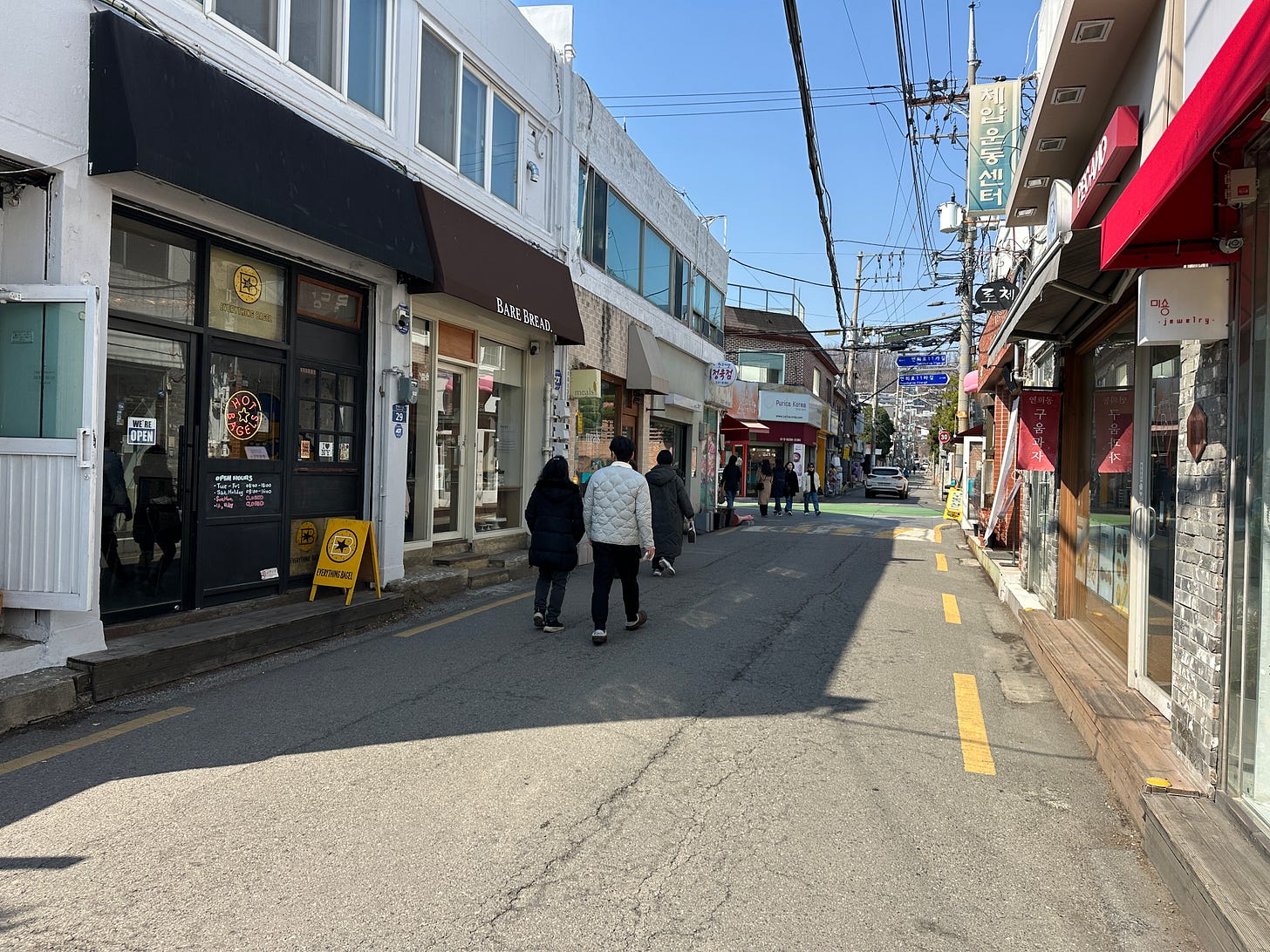
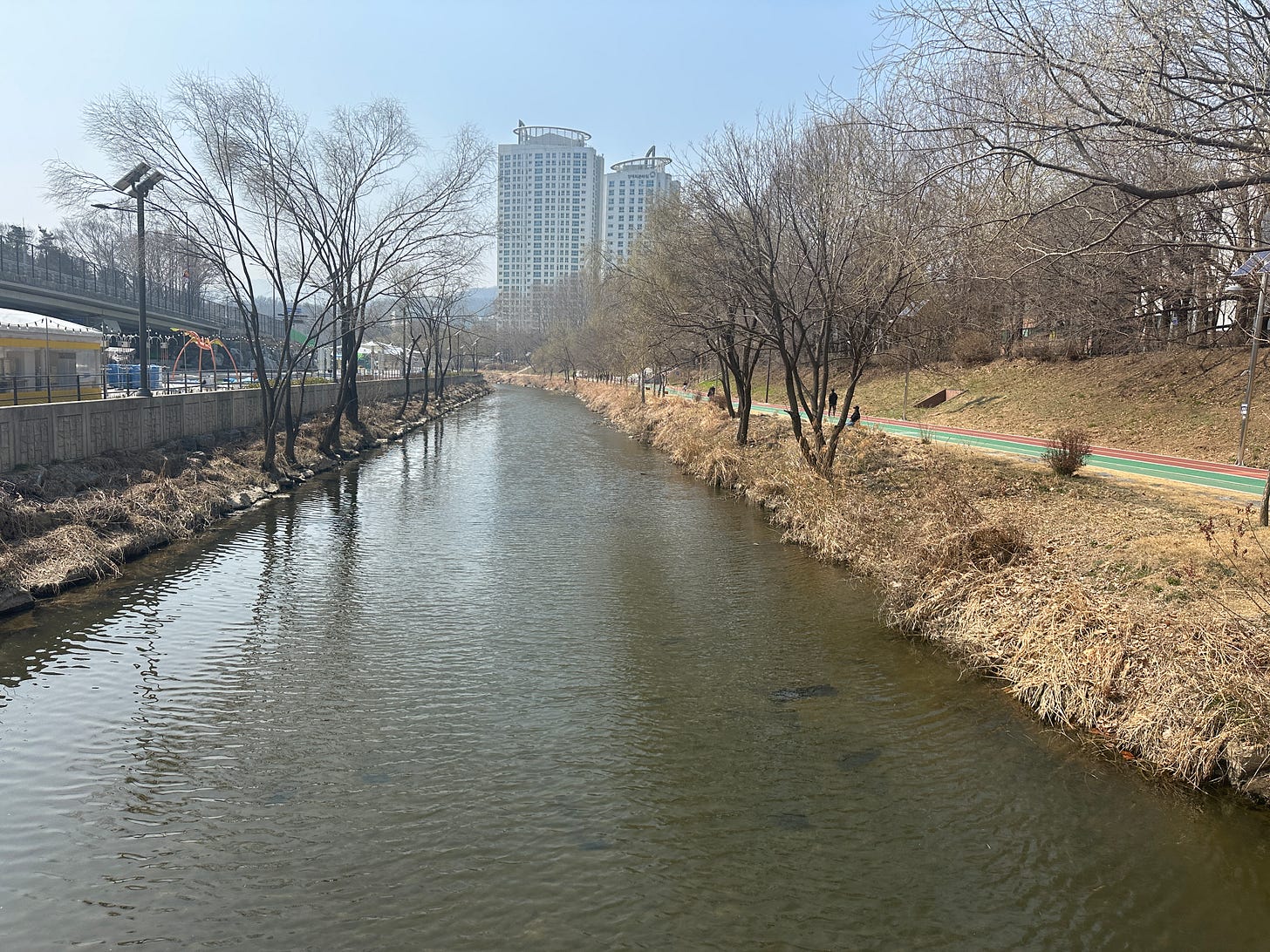
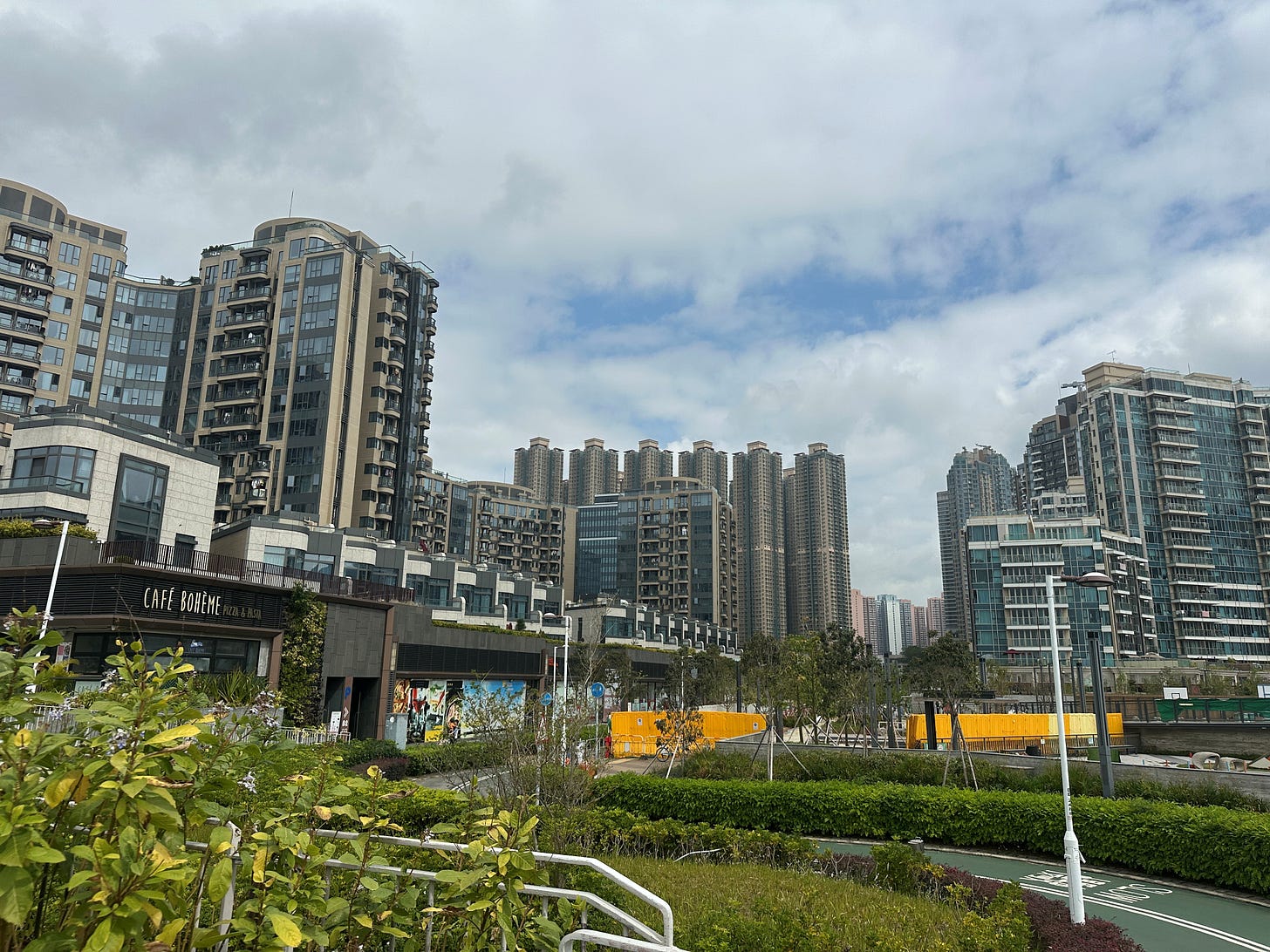

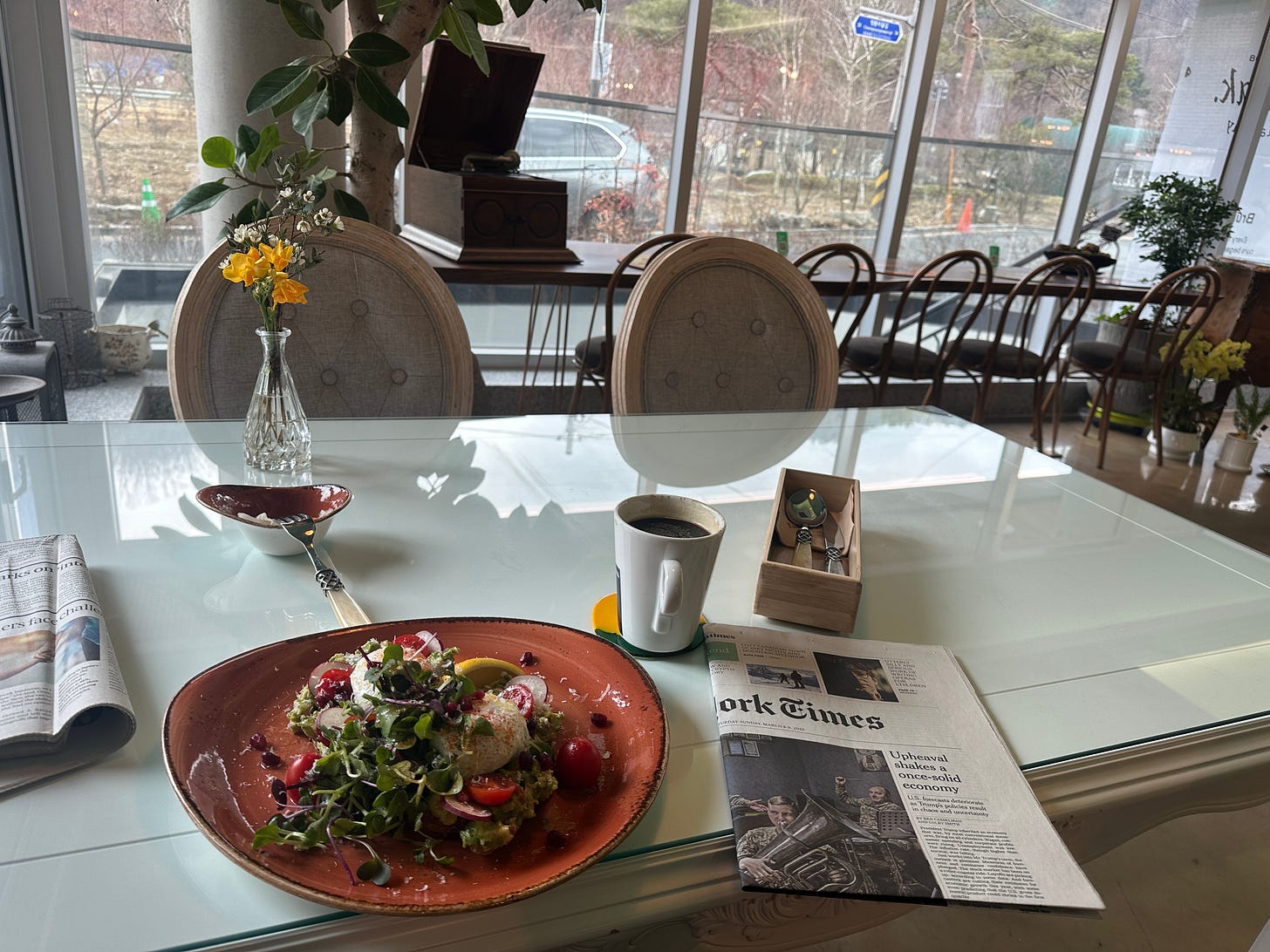
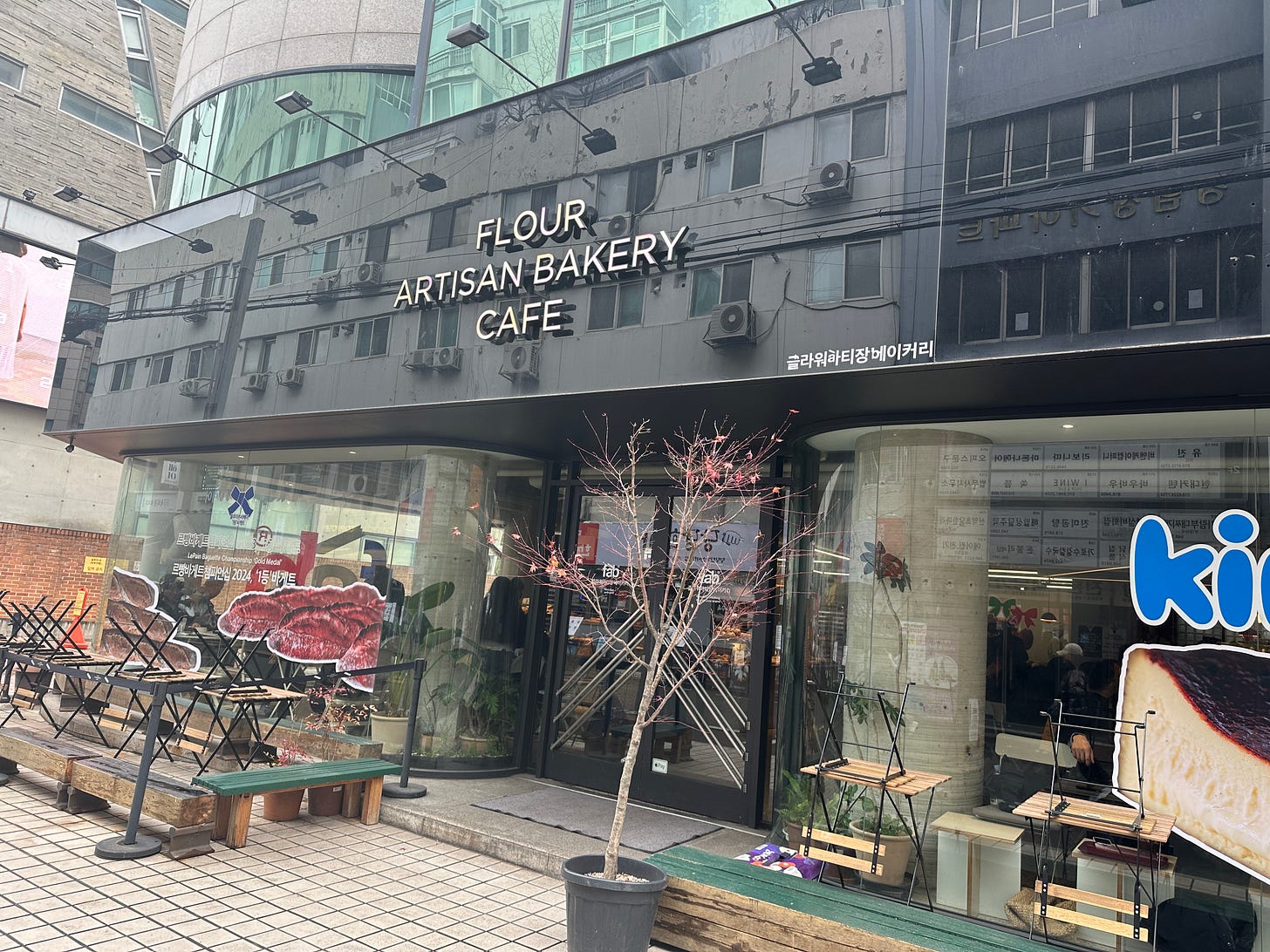
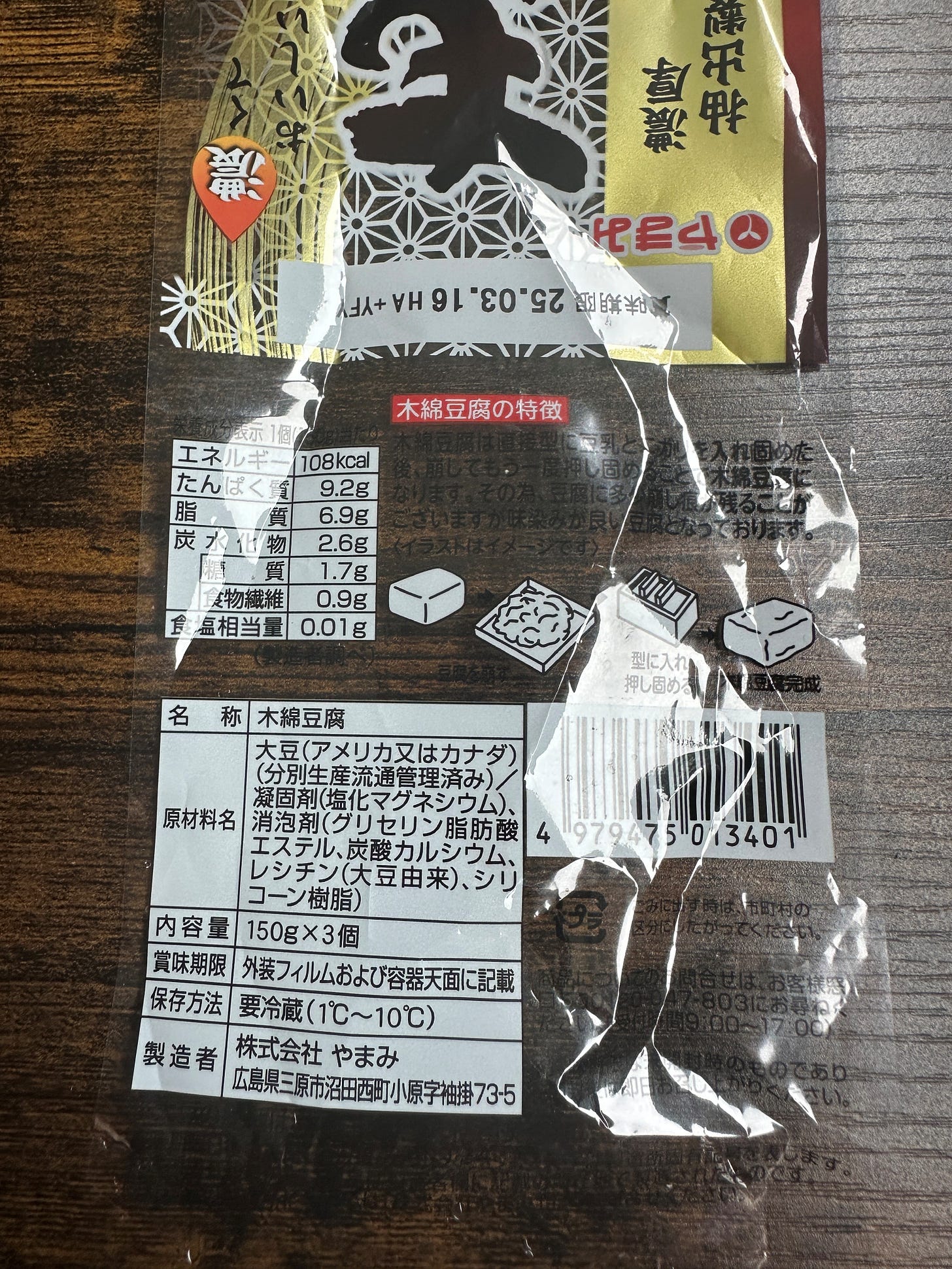
Well Igor, you are clearly a great influencer: Having read your blogs I watched, once again, The Shogun. An 1980 classic about 17th century Japan starring Chamberlain. What a treat! After James Clevell's novel. Will re-read his Gaijin now... Thanks!
Does “never had to use cash in Korea” mean that you can ALSO use cash, or is digital the only option?